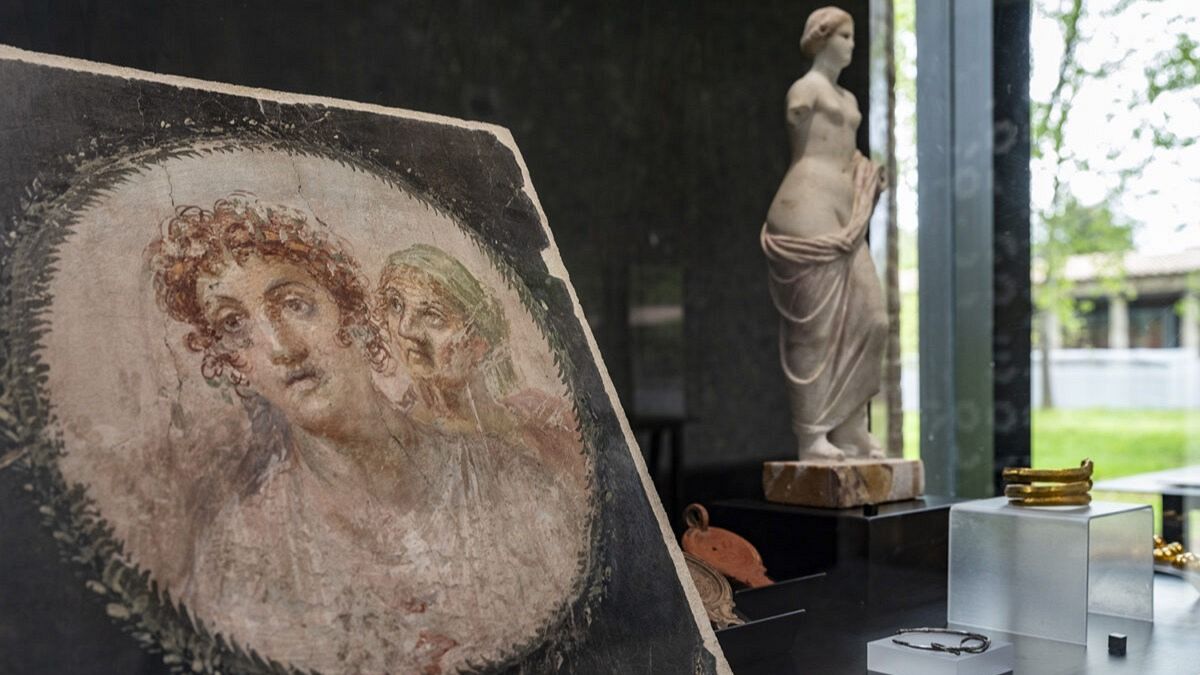A French team of archaeologists have made a remarkable discovery - the ruins of a 3,400-year-old Egyptian town near the modern-day city of Alexandria, that was possibly built by the legendary King Tutankhamun’s father, Akhenaten.
Detailed in a new study published in Antiquity, the mud-brick ruins are believed to date back to Egypt’s 18th Dynasty (circa 1550–1292 BCE), a period known for its wealth, power, and dramatic shifts in religious ideology.
The site, known as Kom el-Nugus, lies 27 miles west of Alexandria, perched on a rocky ledge between the Mediterranean Sea and Lake Mariout. Although excavations began in 2013, it was long assumed that the area had only been settled during the Hellenistic period, when the Greeks arrived around 332 BCE.
“The discovery of New Kingdom remains at the site was a great surprise,” lead archaeologist Sylvain Dhennin of the University of Lyon and the French National Centre for Scientific Research told the New Scientist. “This discovery completely revises the history of Egypt’s western frontier in the New Kingdom.”
Among the most noteworthy finds found during the excavation were amphora jar fragments stamped with the name Merytaton, who was believed to the eldest daughter of revolutionary pharaoh Akhenaten and his queen, Nefertiti - and thus making her the sister or half-sister of Tutankhamun. The markings indicate the settlement could have been a wine production facility that may have been dedicated to her, suggesting that royal branding and product endorsements existed in ancient Egypt.
"The presence of this stamp probably indicates the production of wine belonging to a royal estate" study author Sylvain Dhennin, an archaeologist with the French National Center for Scientific Research (CNRS), told Live Science. "The vineyards on the margins of Egypt were probably protected by the military and formed part of a pioneering front to occupy this region towards the desert."
Other discoveries include fragments of a stele bearing the cartouches of Pharaoh Seti II (r. 1203–1197 BCE), and architectural remnants linked to a temple honouring Ramesses II - a ruler often speculated to be the pharaoh of the biblical Exodus.
While the full scale of the settlement remains unknown, the presence of a meticulously designed street, cleverly sloped to drain water and protect buildings from erosion, points to a town of significant size and sophistication.
Other recent ancient Egyptian discoveries
The discovery of the settlement adds to a series of major Egyptian archaeological finds this year. Just last month, archaeologists unearthed the tomb of Pharaoh Thutmose II - the first pharaonic burial site found since Tutankhamun’s in 1922.
Discovered by a joint British-Egyptian team led by Dr Piers Litherland, the tomb was hidden away in the Western Valleys of the Theban Necropolis, near Luxor.
Mohamed Ismail Khaled, the secretary general of Egypt's Supreme Court of Antiquities, said in a statement that the discovery was “one of the most significant archeological breakthroughs in recent years.”
Days later, the same team announced they may have located a second tomb belonging to Thutmose II, buried 23 metres beneath a carefully disguised mound of rubble, limestone, ash, and mud plaster. Litherland believes the tomb could contain the pharaoh’s mummified remains and grave goods. “The best candidate for what is hidden underneath this enormously expensive, in terms of effort, pile is the second tomb of Thutmose II,” he told The Observer.
And earlier this year, a French-Swiss archaeological team in Egypt made another remarkable discovery - the tomb of a high-ranking wizard-doctor who served the pharaohs some 4,000 years ago. Inscriptions identify the tomb’s owner as Tetinebefou, a celebrated doctor during the reign of King Pepi II (circa 2305–2118 BC).

 1 day ago
4
1 day ago
4






 We deliver critical software at unparalleled value and speed to help your business thrive
We deliver critical software at unparalleled value and speed to help your business thrive






 English (US) ·
English (US) ·